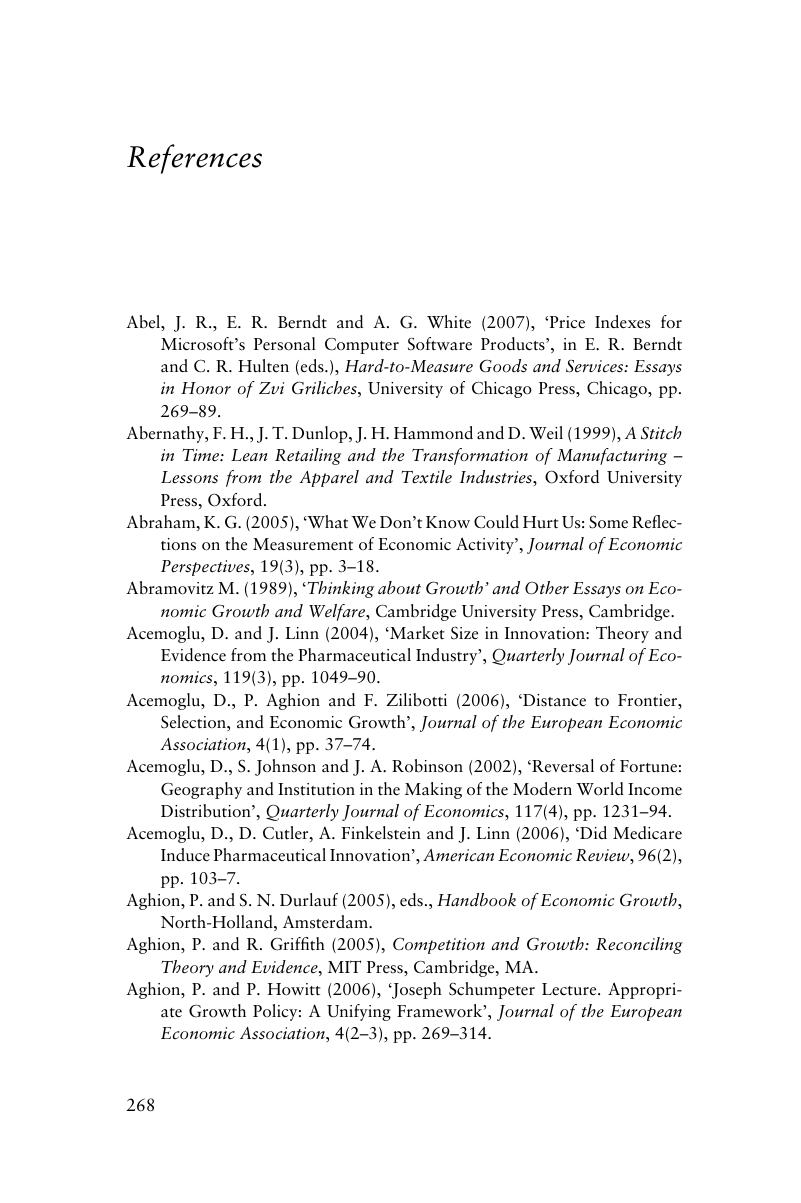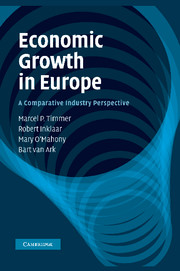Book contents
- Frontmatter
- Contents
- List of figures
- List of tables
- Preface and acknowledgements
- 1 Introduction and overview
- 2 Economic growth in Europe
- 3 EU KLEMS database
- 4 Structural change
- 5 The industry origins of aggregate growth
- 6 Productivity levels and convergence
- 7 Drivers of productivity growth in Europe
- References
- Index
- References
References
Published online by Cambridge University Press: 06 December 2010
- Frontmatter
- Contents
- List of figures
- List of tables
- Preface and acknowledgements
- 1 Introduction and overview
- 2 Economic growth in Europe
- 3 EU KLEMS database
- 4 Structural change
- 5 The industry origins of aggregate growth
- 6 Productivity levels and convergence
- 7 Drivers of productivity growth in Europe
- References
- Index
- References
Summary

- Type
- Chapter
- Information
- Economic Growth in EuropeA Comparative Industry Perspective, pp. 268 - 288Publisher: Cambridge University PressPrint publication year: 2010



